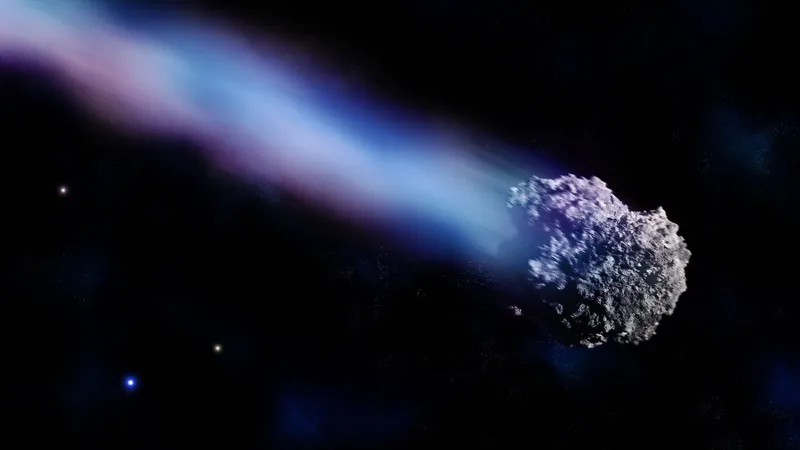
Unlocking the Secrets of Cosmic Threats: How Meteoroid Trails Could Help Spot 'Planet-Killer' Comets Before They Strike!
2024-11-07
Author: Yu
Introduction
A groundbreaking study reveals that the enigmatic trails of meteoroids left behind by rare comets could act as an early warning system for potential 'planet-killer' events, allowing us to identify these cosmic threats years before they can potentially ram into Earth.
The Nature of Comets
While many comets frequent our solar neighborhood, like the famous Halley's Comet that graces us every 76 years, others are stealthy travelers, making their presence known only once every couple of centuries or more. Names like A3 Tsuchinshan-ATLAS serve as reminders that although infrequent, some of these comets might carry celestial dangers that could impact our planet.
Long-Period Comets and Threat Assessment
Research indicates that long-period comets (LPCs)—those that don’t approach the sun more than once every 200 years—could be accountable for up to 6% of all impacts on Earth. The most alarming aspect of LPCs is the threat they pose; those whose orbits come within approximately 4.65 million miles (about one-twentieth the distance to the sun) could unleash catastrophic power upon impact. To put this in perspective, an asteroid just 0.6 miles across, hitting at 30 miles per second, would unleash destruction equivalent to 750,000 megatons of TNT.
Meteoroid Streams as an Early Warning System
The innovative study proposes that as comets draw near the sun, the intense heat vaporizes their icy compositions, ejecting rocks and dust into a meteoroid stream. These streams—if we happen to cross their path—trigger meteor showers, giving scientists crucial data about the speed and direction of the meteoroids. This information could lead to the identification of their originating comets before they become a threat.
The Role of Advanced Technology
Current observational technology struggles to detect the faint long-period comets, but hope lies in the upcoming Legacy Survey of Space and Time (LSST) which will be managed by the groundbreaking Vera C. Rubin Observatory. This technological leap could allow astronomers to catch sight of these elusive comets much earlier than ever before.
Simulation and Predictions
To validate their techniques, researchers examined 17 known meteor showers with linked LPCs. By simulating different comet families corresponding to each meteoroid stream, they effectively predicted where potential threats would be located. Remarkably, the actual comets largely aligned within these simulated clusters. This innovative approach could offer a significant increase in lead time—potentially years—to prepare for a cosmic collision.
Future Research Directions
As research progresses, the scientific team plans to leverage LSST's resources to further probe LPC parents of orphaned meteoroid streams—247 of which interact with Earth's orbit based on recent findings.
Limitations and Challenges
While this methodology shows great promise, scientists warn of its limitations. Identifying imposing comet threats with orbital periods exceeding 4,000 years proves to be too challenging, as their meteoroid streams become too dispersed to be detected from our vantage point.
Conclusion
As humanity looks to the skies, this vital research underlines the importance of being prepared for celestial hazards that could endanger life on Earth. What other secrets will the cosmos reveal to us next? Stay tuned as we venture into the uncharted territories of space!



 Brasil (PT)
Brasil (PT)
 Canada (EN)
Canada (EN)
 Chile (ES)
Chile (ES)
 España (ES)
España (ES)
 France (FR)
France (FR)
 Hong Kong (EN)
Hong Kong (EN)
 Italia (IT)
Italia (IT)
 日本 (JA)
日本 (JA)
 Magyarország (HU)
Magyarország (HU)
 Norge (NO)
Norge (NO)
 Polska (PL)
Polska (PL)
 Schweiz (DE)
Schweiz (DE)
 Singapore (EN)
Singapore (EN)
 Sverige (SV)
Sverige (SV)
 Suomi (FI)
Suomi (FI)
 Türkiye (TR)
Türkiye (TR)